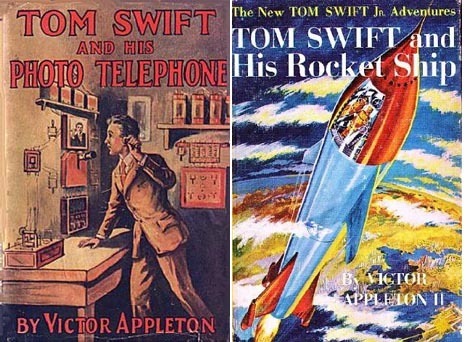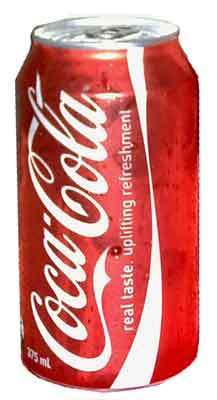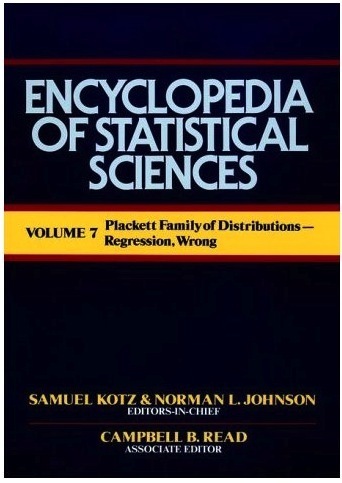Marc Abrahams's Blog, page 555
August 11, 2012
How To Whistle Loudly
Nat Wilson applies principles of acoustics as he demonstrates “How To Whistle Loudly“.
Other people, too, tell and show how to do it:

Much ado about falling cats
The folks at Smarter Every Day produced this video about falling cats—and how those cats manage to land on their feet:
(Thanks to investigator Arne Tomlinson for bringing this to our attention)
BONUS: The apocryphal, published study “Does a Cat Always Land on Its Feet?” from the special Animal Behavior issue (vol. 4, no. 4, 1998) of the Annals of Improbable Research.

Algorithm predicts Barack Obama Will Be Re-Elected President
by Eric Schulman and Daniel Debowy, August 11, 2012
Now that both major US political parties have announced their nominees for president and vice president, the Annals of Improbable Research U.S. Presidential Election Algorithm (Debowy and Schulman 2003) can be used to predict the results of the upcoming November election.
The algorithm predicts that the Democratic ticket of Barack H. Obama II and Joseph R. Biden Jr. will win the election in November 2012.
The algorithm was developed based on the experience of the major party candidates for president and vice president in each of the 54 U.S. presidential elections between 1789 and 2000 and correctly predicted the outcome of the 2004 and 2008 U.S. presidential elections.
Background: About the election-prediction algorithm
According to the algorithm, being a United States senator does not contribute to one’s electability for president or vice president, being president contributes five electability points per year, and being vice president contributes four electability points per year, so the Obama/Biden ticket has a total electability of 36. Williard M. Romney was governor for four years, giving him 44 electability points. However, Romney is the first Mormon to be a major-party candidate for president, which subtracts 110 electability points and results in his total electability being -66. Paul D. Ryan Jr. has spent 14 years in the U.S. House of Representatives, giving him 14 points of vice presidential electability, so the Romney/Ryan ticket has a total electability of -52.
A flawless history of correct projections
Although the Annals of Improbable Research U.S. Presidential Election Algorithm has a 100% rate of successful predictions, the majority of Republican Party voters do not appear to have accepted the validity of this algorithm. Schulman and Debowy (2010) found nine Republican candidates who would win the November election if they were the Republican presidential nominee and Ryan was the Republican vice presidential nominee, including two who actively campaigned for president (Timothy J. Pawlenty and Ronald E. Paul) and seven who decided not to do so (George E. Pataki, Michael D. Huckabee, David H. Petraeus, John E. Bush, Haley R. Barbour, Pyush Jindal, and Sarah L. H. Palin).
The behavior of the majority of Republican primary voters in 2012 appears to be consistent with the behavior of the majority of major party primary voters in 2008 in that neither appeared to take the Annals of Improbable Research U.S. Presidential Election Algorithm into account when making their choices for presidential candidate.
In 2008, the Democrats nominated Obama/Biden (total electability of zero), the weakest ticket since Barry M. Goldwater and William E. Miller (total electability of -96) lost to Lyndon B. Johnson and Hubert H. Humphrey, Jr. (total electability of 17) in 1964. However, the Republicans nominated McCain/Palin (total electability of -104), the weakest ticket since Alton B. Parker and Henry G. Davis (total electability of -110) lost to Theodore Roosevelt and Charles W. Fairbanks (total electability of 37) in 1904. As a result, Obama/Biden won the election of November 2008, becoming the weakest ticket to win a presidential election since John Adams (total electability of zero) defeated Thomas Jefferson (total electability of -88) in 1796.

August 10, 2012
For bibliophiles: Plackett Family of Distribution to Regression, Wrong
 Anyone who loves books, any kind of books, is perhaps sure to love this one:
Anyone who loves books, any kind of books, is perhaps sure to love this one:
Plackett Family of Distribution to Regression, Wrong, Volume 7 , Encyclopedia of Statistical Sciences, Samuel Kotz (Editor), Norman Lloyd Johnson (Editor) [pictured here], Campbell B. Read (Editor), Wiley-Interscience; Volume 7 edition (September 29, 1986).
The publisher says it “is written in a language that the non-specialist can easily follow.”

Improbable on “Science Friday” today: Tom Swift
 I’m going to be on NPR’s Science Friday program again today, discussing the Tom Swift novels.
I’m going to be on NPR’s Science Friday program again today, discussing the Tom Swift novels.

(Special thanks to Jess Zimmerman for sending a copy of Tom Swift and His Photo Telephone!)
BONUS: A repository of info about the Tom Swift books
BONUS: Tom Swift and the blessings of invention
BONUS: Wikipedia is a good gateway for info about the Stratemeyer Syndicate — the inventive organization that created the Tom Swift books, and the Nancy Drew books, and the Hardy Boys books, and lots of others.

August 9, 2012
Mining Uranium: Coca Cola® makes U accessible
 Coca Cola® may not be much use as a contraceptive, but it may well be effective in assessing the environmental impact of bioaccessible Uranium (U). Particularly contamination around mines, nuclear reprocessing plants and waste disposal facilities. Authors Bernd Lottermoser, Ewald Schnug and Silvia Haneklaus explain the concept in the 2011 book The New Uranium Mining Boom (just $279.00, direct from the publisher)
Coca Cola® may not be much use as a contraceptive, but it may well be effective in assessing the environmental impact of bioaccessible Uranium (U). Particularly contamination around mines, nuclear reprocessing plants and waste disposal facilities. Authors Bernd Lottermoser, Ewald Schnug and Silvia Haneklaus explain the concept in the 2011 book The New Uranium Mining Boom (just $279.00, direct from the publisher)
The team tested Coca Cola Classic®, Diet Coke® and Coke Zero® in a number of experimental scenarios as an alternative to traditional (and sometimes pricey) assay reagents such as EDTA, DTPA and Ca02. The Diet Coke® worked especially well, outperforming both DTPA and CaO2 – and thus, say the authors, it :
“… provides an excellent indication of bioaccessible U in contaminated mine soils.”
They also provide a speculative reason for its effectiveness, explaining that it’s :
“… possibly due to the presence of artificial sweeteners (acesulfame potassium, aspartame) benzoate and citrate.”
Extracts (of the book) available here

August 8, 2012
“The Bohr-Einstein Debates, With Dog Puppets”
Perhaps the simplest thing to say about this video by Chad Orzel is that it may be self-explanatory. It’s called ”The Bohr-Einstein Debates, With Dog Puppets“:

August 7, 2012
The Virtue of Vagueness in Vision Statements
 Those tasked with running large organisations sometimes have to make major changes to achieve organisational goals. What can be done to help ensure that these changes are effective? One strategy – proposed by professor Dennis A. Gioia and colleagues at the Department of Management and Organization of Penn State University, is to deliberately introduce a degree of ‘vagueness’ into the organisation’s vision statements.
Those tasked with running large organisations sometimes have to make major changes to achieve organisational goals. What can be done to help ensure that these changes are effective? One strategy – proposed by professor Dennis A. Gioia and colleagues at the Department of Management and Organization of Penn State University, is to deliberately introduce a degree of ‘vagueness’ into the organisation’s vision statements.
“We draw on organizational and political concepts to make the case that ambiguity in the expression of future aspirations enables a sense of alignment between local and larger organizational goals that eases the political path to successful chvange [sic]”.
And, going further :
“We also explore the paradox that, occasionally, the path out of ambiguity involves the initial injection of even more ambiguity into an already ambiguous situation.”
The paper: ‘Visionary Ambiguity and Strategic Change: The Virtue of Vagueness in Launching Major Organizational Change‘ is scheduled for future publication in the Journal of Management Inquiry.
Please send examples of published ‘Vague Vision Statements’ to 

Not (and not not) recommended for hair club members
The technique shown in this video is not recommended for members of the Luxuriant Flowing Hair Club for Scientists (LFHCfS). Nor is it not recommended.
The video is called “Painting Your Room With Metal Music and Your Hair”. (Thanks to investigator Wendy Cooper for bringing it to our attention.)

August 6, 2012
Faint laughter – a new study
A new medical study called Recurrent Laughter-induced Syncope documents the existence of a paradoxical malady. Prior to reading the report, physicians might assume the phenomenon to be nothing more than a joke. A joke, they will learn, is just the beginning of the problem.
 The two authors, Drs Athanasios Gaitatzis and Axel Petzold [pictured here], describe their case in simple, albeit technical, prose: “A healthy 42-year-old male patient presented to the neurology clinic with a long history of faints triggered by spontaneous laughter, especially after funny jokes … There was no evidence to suggest cardiogenic causes, epilepsy, or cataplexy and a diagnosis of laughing syncope was made.”
The two authors, Drs Athanasios Gaitatzis and Axel Petzold [pictured here], describe their case in simple, albeit technical, prose: “A healthy 42-year-old male patient presented to the neurology clinic with a long history of faints triggered by spontaneous laughter, especially after funny jokes … There was no evidence to suggest cardiogenic causes, epilepsy, or cataplexy and a diagnosis of laughing syncope was made.”
A paper by Gaitatzis, based at the SEIN-Epilepsy Institute in Heemstede, the Netherlands, and Petzold, of the UCL Institute of Neurology in London, appears in the journal Neurology….
So begins this week’s Improbable Research column in The Guardian.
BONUS: the Monty Python sketch with which the new research resonates:
BONUS: A sample of George Costanza, part of the body of work referred to in one of the studies mentioned in one of the studies:
BONUS: In the newspaper piece, I thanked Dr. Erwin Kompanje, the person who told me about the new faint-laughter study. But I mangled the spelling of his name. I emailed him an apologie, and received this reply:
Ala, my name is pronounced and written in many different ways!
Kompje
Komnaje
Van Kompanje
Compagne
Kompanjer
Companje
Kompanie
Compagnie
Gompanje
But Kompanije is new! Thanks Marc (for bringing this to our attention) (-:
dr Erwin J.O. Kompanje
Senior researcher societal and ethical consequences of critical illness
Department of Intensive Care
Erasmus MC University Medical Center Rotterdam

Marc Abrahams's Blog
- Marc Abrahams's profile
- 14 followers
























